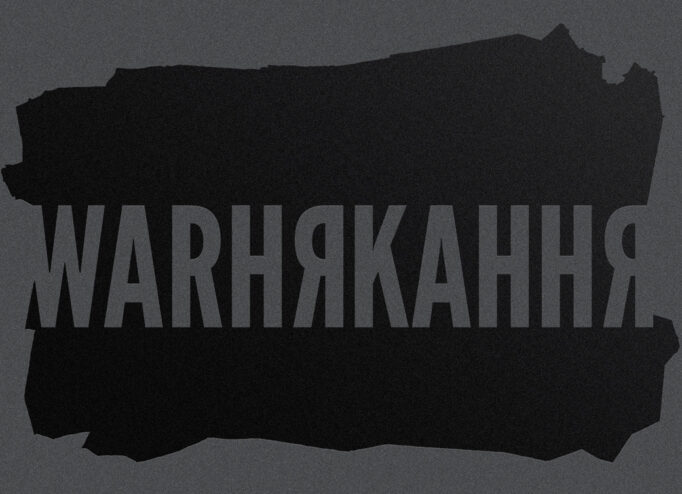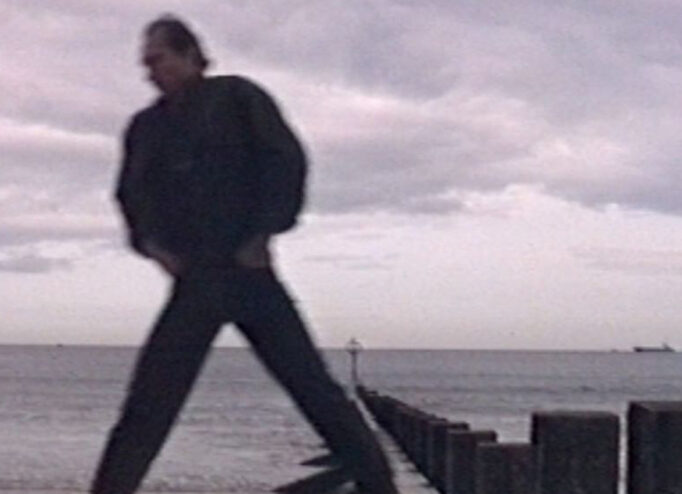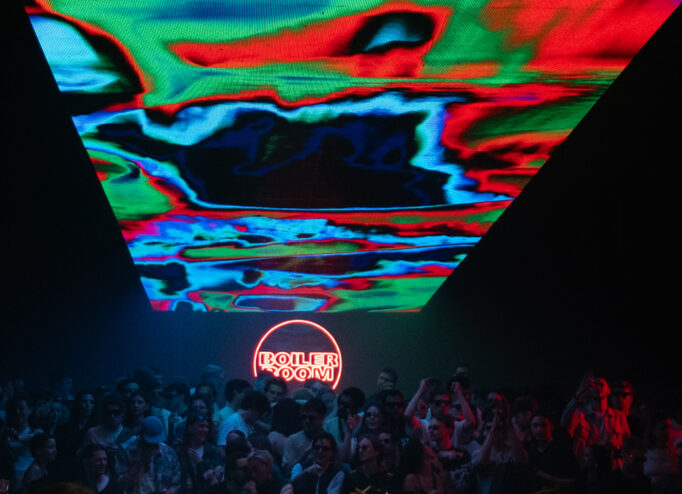ist publishing releases the illustrated book ‘Russian Colonialism’ — ‘a guide to the 48 most recent invasions of russian colonialism’. The author of the text is journalist Maksym Eristavi, who has been researching the crimes of russian colonialism for many years, and seven Ukrainian illustrators worked on the images for the publication. The book is already available for pre-order and is due to be released in November, and all profits from the sale of the first edition will be donated to the Ukrainian Emergency Art Fund.
DTF Magazine asked Maksym Eristavi to tell more about ‘Russian Colonialism’
How the idea for the book came about
A few days before the full-scale invasion, I lost sleep over the premonition that something terrible was about to happen to Ukraine. For years, I had been trying to raise awareness of russian colonialism in the world and could not believe that the impending full-scale invasion of Ukraine was being perceived abroad as something unprecedented and new.
During sleepless nights, I created a Twitter thread where I collected all cases of russian colonial invasion over the last 111 years. I wanted to simply and at the same time clearly show that russia’s upcoming full-scale attack on Ukraine is a consequence of a centuries-long colonial strategy that has been implemented in different territories in the same way.
Under different regimes, russia uses the same formulas to consolidate its colonial domination in the near-russian space — manipulation, invasion, extermination. Since then, the Twitter thread has gone viral and people still share it every day. But I immediately realized that it was more important to go beyond social media and turn this thread into something physical to interest more people around the world.
moscow is awfully uncreative. in the last one hundred years #russianColonialism has been using the same invasion and occupation tactic over and over and over again. thread.
— вареничок.eristavi 🇺🇦🏳️🌈 (@maksymeristavi) September 13, 2022
Historically, it is art and culture that have always helped Ukrainians to survive in the darkest times, and I was no exception. After the full-scale invasion began, I was psychologically and mentally saved by the art created by Ukrainian artists in spite of genocide and daily terrorism.
For me, turning pain, fear and trauma into something new and life-affirming — volunteering, work or art — is the most inspiring type of resistance to evil. So the idea of combining Ukrainian war-time art and a story about exposing the serial behavior of the colonial empire emerged in my head almost immediately.
Then there was the happy coincidence of meeting like-minded people at the perfect time and place — ist publishing, known for its art books, Ukrainian artist and illustrator Sergiy Maidukov, who agreed to become the art director of the project, creating the cover and some cool illustrations. As well as artists Alisa Gots, Nikita Kravtsov, Nataliia Kozeko, Danyl Shtangeev, Natasha Steshenko, Ave Libertatemaveamor, who created the visual narrative for the guide.
And also Ostap Yashchuk, who created the cool design. And finally, the Ukrainian Art Emergency Fund, which helped us gather a super team of artists from all over Ukraine. I’ll never forget how they started their first creative session to the sound of explosions during the massive attack on Kyiv.


Why they chose the illustrated book form
Art has a universal power of action that hooks many more foreigners and overcomes many more cultural and linguistic barriers than any texts. Especially the art of Ukrainian artists during these crucial moments of our life as a community and as a country.
I also wanted to create a message about the victory of creation over destruction — that even in the darkest times, we find ways not to give up and continue to expose the empire in the most creative ways. The first printing of this book is a fundraising to support Ukrainian artists and artists who continue to create despite the genocide. All profits from the sale will go to them through the Ukrainian Emergency Art Fund.


I also needed illustrative material for the book. Although I have been researching russian colonialism for years, I am still shocked at how difficult it is to find any visual documentary evidence of russian colonial crimes or of the tens of millions of victims killed by the russians, even in relatively recent history.
The russians could deport an entire people, such as the Kyrymly or Kalmyks (or Halmgud, as they call themselves), in 24 hours, but it is almost impossible to find photographic or video evidence of these crimes in the public domain. And it is even more difficult to find evidence of russian incursions into isolated indigenous communities in Siberia or the Arctic — thanks to colonial policies ‘delete all’
So I felt the need to illustrate the stories concerning which the russian empire deliberately left no evidence. And who better than the artists, who survived during the resistance to the empire, for this task?
Why this book is important
Ideally, this book should have been published a few generations ago, before I was born, because critical conversations about Western colonialism go back more than a century. But russian colonialism, despite the fact that it was no different from any other, has been ignored by people, and continues to be ignored. Why? It is a mix of complex reasons about which we can talk for a long time, and the most important of them is russian propaganda.
Historically, russia is insignificant in most of the accomplishments it claims as its own, but it is the best in the world at creating effective propaganda. Regimes change in Moscow, but the policy of rewriting history and destroying authentic sources that contradict the ideology of russian civilizational domination has remained unchanged for centuries.


‘Iron Curtain’ is not only about the Soviet Union, but also about the centuries-old filter that russia managed to build between the outside world and its enslaved peoples. Moscow had a complete monopoly on explaining to foreigners who we were, where we came from, and what our destiny was. As well as the ability to authoritatively create a mythology about what russia is and who russians are. russians even stole their name from Ukrainian Rus, but few people abroad know about it because it was impossible for alternative propaganda voices to get through the ‘Iron Curtain’.
Systematic work to conceal or destroy historical evidence among the renewed peoples is an inseparable part of such success. I recently read about the massacre and destruction of the Cossack capital, Baturyn, by russian troops in the 18th century. One of the key objectives of the terrorists was the complete destruction of the documentary heritage in the city — they burned everything they did not take from the local archives and libraries to the Moscow repositories.
This is just one example out of thousands that became very personal to me after February 24, when the russians occupied my home village in the Zaporizhzhia region. One of the first things they did was to go into the local archives and libraries, seize and burn everything they found there that was Ukrainian-language. They even purposely destroyed family photo albums in some houses.

The culture of romanticizing Tolstoyevsky, and the fact that 99% of knowledge about Ukraine came from the filter of the colonizer is a tragic consequence of russian colonial policy. So it can’t be fixed in a year or decades. But for the first time in history, there is no Moscow filter. But there is a clearer understanding among formerly enslaved peoples (not only Ukrainians, but also Moldovans, Kazakhs, Georgians and others) of what happened to us, and a deeper awareness of the permanence of russian domination. The scale of the educational work that needs to be done is gigantic, but it is also easier to do it together. That is why the guide ‘Russian Colonialism’ is not only about Ukraine.
For whom this book is for
I would like it to be a hit primarily abroad. Exposing russia as a colonial fascist empire with a history of organized terrorism, taking place according to the same formula, is first and foremost about justice. About stopping the popular talk that ‘this is Putin’s war and russians are victims too’ and ending the surprise of ignorance, because russia has always been like this and will remain so until it pays for its crimes. And until the shame culture of russian colonialism becomes the global mainstream.
Also, without a broad understanding of russian colonialism, there will be no more sanctions, no more reparations. And no one will come to help other enslaved peoples and countries that russia will attack next.
Until there is a clear understanding of russian colonialism, regimes and generations of citizens in russia will change, but colonialism and fascism will remain to terrorize new generations in neighboring societies.


There is also an important personal ‘Ukrainian’ motivation in this work — now finding out the truth about myself, about my roots, about what exactly in my worldview is shaped by colonial domination and what is authentic seems to me more important than convincing avid Western Tolstoyevsky fans.
Researching similar stories of other victims of our common abuser will also accelerate the process of russia’s fall. Our stories and our voices have been erased and ignored for years, which is why the victims of russian colonialism for the most part cannot tell of their family tree deeper than a few generations. The empire will not die until it dies in our heads. That is why the book was immediately published in Ukrainian and is dedicated primarily to Ukrainians.






